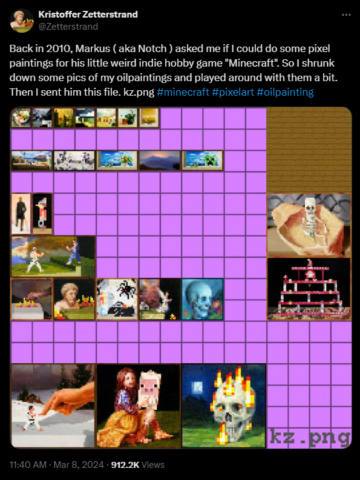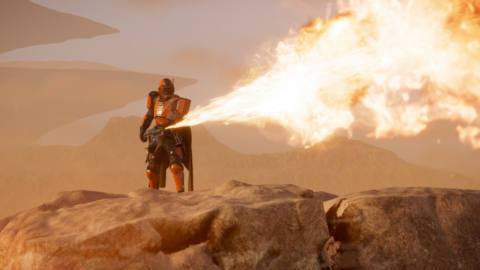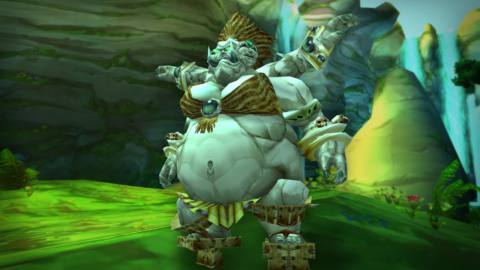You know all the tiny, pixelated paintings that you can decorate your walls within Minecraft with? Many of them were created by Swedish artist Kristoffer Zetterstrand, who “shrunk down” photos of his oil paintings to produce the now iconic pixel art canvases.
On Twitter, Zetterstrand recently reflected on his contribution to Minecraft and shared the png that started it all.
“Back in 2010, Markus (aka Notch) asked me if I could do some pixel paintings for his little weird indie hobby game 'Minecraft,'” Zetterstrand explained in a tweet. “So I shrunk down some pics of my oil paintings and played around with them a bit. Then, I sent him this file. kz.png”

In response to a question about whether he considered how many times his paintings have been viewed in Minecraft over the last decade, Zetterstrand simply said, “It's surprising and fun.”
I've probably stared at Zetterstrand's macabre little pixel art paintings in Minecraft more than any other pieces of art in the real world. I still tirelessly re-hang and break canvases to try and get the right one to suit my grand interior design concept, whether that be in a dirt hut or a medieval stone castle. Although I usually just end up falling back on the burning skull to fill the hole in my wall.
Zetterstrand's Minecraft paintings, which include a skeleton sitting in what looks like a fortune cookie and a variant of Caspar David Friedrich's famous “Wanderer above the Sea of Fog,” are all oddly captivating, and not images you might associate with Minecraft at first glance. But this mismatch of styles is what makes the paintings so memorable and oddly hilarious. Who doesn't want to hang a glorious landscape painting of two black belts fighting over their blocky fireplace?
But trying to decode some of these tiny pieces of pixelated art often just gives me an almighty headache, as I end up hunched over, squinting at my screen. Luckily, Zetterstrand has provided fans with tons of great comparisons where you can see the oil painting and then the subsequent pixel art that was developed from it.
It's great to be able to appreciate these familiar paintings in a new way, especially, as it provides us with so much more detail and understanding. However, while many of my questions have now been answered, I still can't help but wonder if the non-square human skulls in these paintings imply the existence of a secret sect of life-like humans who populate the deep caves in some unexplored part of the world.






